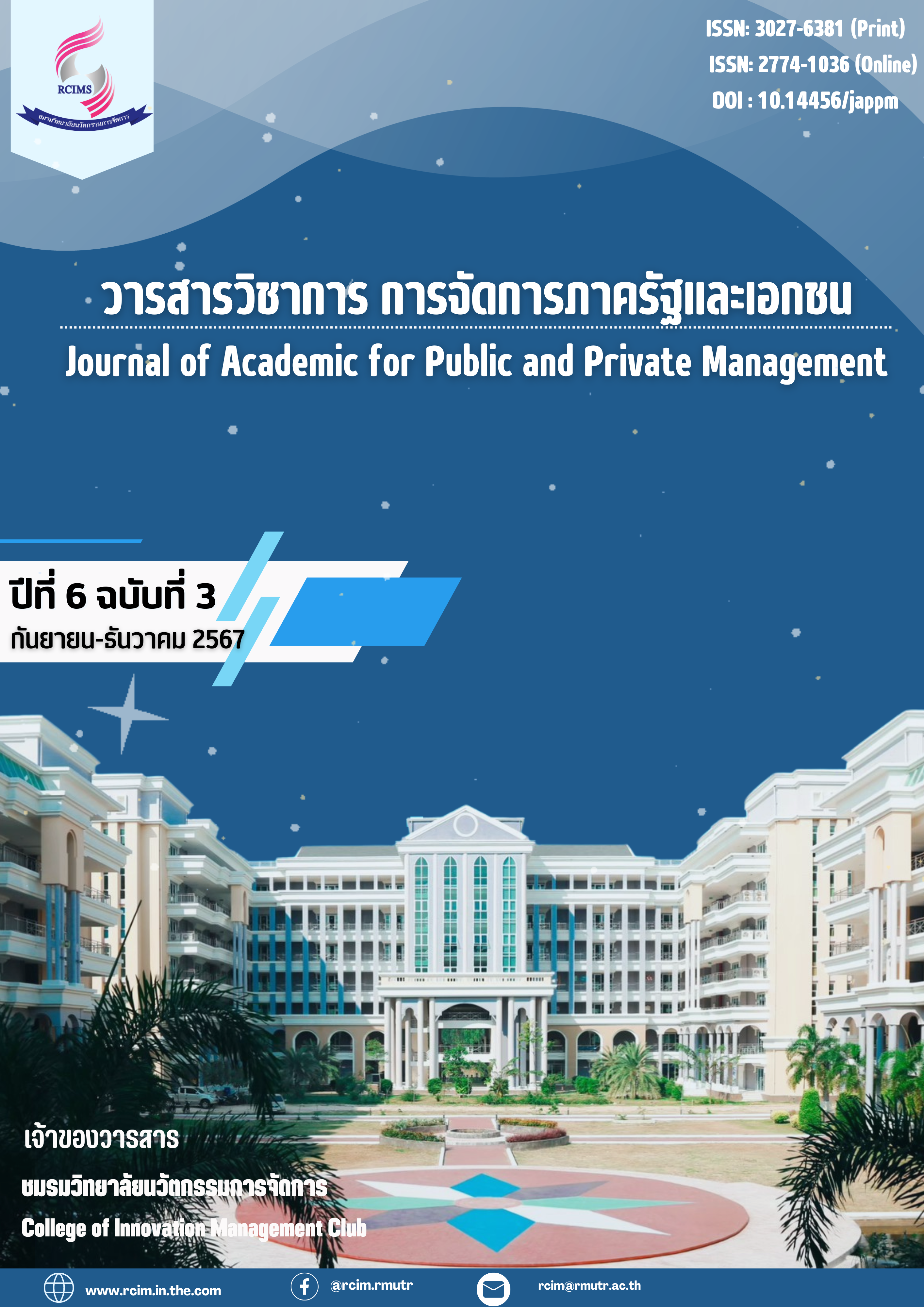การพัฒนารูปแบบการจัดการเรียนรู้นาฏศิลป์ไทยเพื่อเสริมสร้างสมรรถนะทางนาฏศิลป์ของนักศึกษาสาขาวิชานาฏศิลป์ศึกษา
Main Article Content
บทคัดย่อ
การวิจัยในครั้งนี้มีวัตถุประสงค์เพื่อ1)เพื่อศึกษาและพัฒนารูปแบบการจัดการเรียนรู้นาฏศิลป์ไทยเพื่อเสริมสร้างสมรรถนะทางนาฏศิลป์2)เพื่อประเมินประสิทธิภาพของรูปแบบการจัดการเรียนรู้นาฏศิลป์ไทยเพื่อเสริมสร้างสมรรถนะทางนาฏศิลป์ ผู้วิจัยกำหนดกลุ่มตัวอย่างผู้ให้ข้อมูลได้แก่ผู้เชี่ยวชาญ 3 ท่านซึ่งได้มาจากการเลือกแบบเจาะจง(Purposive Selection)เพื่อให้ข้อมูลเกี่ยวกับรูปแบบการจัดการเรียนรู้ที่ส่งเสริมสมรรถนะทางนาฏศิลป์ไทยกลุ่มตัวอย่างได้แก่ นักศึกษาระดับปริญญาตรีสาขาวิชานาฏศิลป์ศึกษา วิทยาลัยการฝึกหัดครู มหาวิทยาลัยราชภัฏพระนคร ชั้นปีที่ 3 จำนวน 30 คน
ผลการวิจัยพบว่า 1)รูปแบบการจัดการเรียนรู้นาฏศิลป์ไทยเพื่อเสริมสร้างสมรรถนะทางนาฏศิลป์ของนักศึกษาสาขาวิชานาฏศิลป์ศึกษาประกอบด้วย 4 องค์ประกอบ ดังนี้ 1.หลักการ 2.วัตถุประสงค์ 3.กระบวนการโดยกระบวนการจัดการเรียนรู้ประกอบด้วยสมรรถนะทางนาฏศิลป์ของนักศึกษาสาขาวิชานาฏศิลป์ศึกษาดังนี้ สมรรถนะทางนาฏศิลป์แบ่งเป็น 3 ด้าน ดังนี้ 1.สมรรถนะด้านความรู้ ประกอบด้วยความรู้ความเชี่ยวชาญทางนาฏศิลป์และความเชี่ยวชาญด้านการสอน 2.สมรรถนะด้านทักษะ ประกอบด้วย มีความคิดสร้างสรรค์การประยุกต์ใช้และแก้ปัญหา ทักษะการถ่ายทอดและวิธีการสื่อสาร3.สมรรถนะด้านคุณลักษณะส่วนบุคคลประกอบด้วยการจัดการตนเองและการทำงานร่วมกับผู้อื่นและ4.วัดประเมินผล2)ประสิทธิภาพของรูปแบบการจัดการเรียนรู้นาฏศิลป์ไทยเพื่อเสริมสร้างสมรรถนะทางนาฏศิลป์ผลการวิเคราะห์อยู่ในระดับมากที่สุดพบว่าโดยภาพรวมของความต้องการจำเป็นในการพัฒนารูปแบบการจัดการเรียนรู้นาฏศิลป์ไทยเพื่อเสริมสร้างสมรรถนะทางนาฏศิลป์ของนักศึกษาสาขาวิชานาฏศิลป์ศึกษา เท่ากับ 5.00
ข้อค้นพบจากงานวิจัยนี้เป็นประโยชน์และแนวทางในการนำไปใช้เพื่อพัฒนาการเรียนการสอนของนักศึกษาระดับปริญญาตรีสาขาวิชานาฏศิลป์ศึกษา
Article Details

อนุญาตภายใต้เงื่อนไข Creative Commons Attribution-NonCommercial-NoDerivatives 4.0 International License.
เอกสารอ้างอิง
กฤษณะ สายสุนีย์, สุวิมล กฤชคหาสน์ และฉันทนา เอี่ยมสกุล. (2563). การวิเคราะห์องค์ประกอบ
สมรรถนะนักวิจัยสร้างสรรค์งานนาฏศิลป์: กรณีศึกษานักศึกษาระดับปริญญาตรี สถาบันบัณฑิตพัฒนศิลป์. วารสารสุทธิปริทัศน์ , 34(109), 110-121
กระทรวงศึกษาธิการ. (2552). หลักสูตรแกนกลางการศึกษาขั้นพื้นฐาน พุทธศักราช 2551.กรุงเทพฯ: โรงพิมพ์ชุมชนสหกรณ์การเกษตรแห่งประเทศไทย.
เบญญาภา คงมาลัย. (2556). รูปแบบการพัฒนาสมรรถนะการจัดการความรู้ของนิสิตนักศึกษาระดับมหาวิทยาลัย, คณะครุศาสตร์, ภาควิชานโยบายการจัดการและความเป็นผู้นำทางการศึกษา.
ทิศนา แขมมณี. (2552). รูปแบบการเรียนการสอนที่หลากหลาย. กรุงเทพฯ: จุฬาลงกรณ์ มหาวิทยาลัย.
สุกัญญา รัศมีธรรมโชติ. (2551). การจัดการทรัพยากรมนุษย์ด้วย Competency-Based HRM. กรุงเทพฯ:สถาบันเพิ่มผลผลิตแห่งชาติ.
สุนทรา โตบัว และศุภชัย จันทร์สุวรรณ. (2558). อนาคตภาพของคุณลักษณะบัณฑิตวิชาชีพครู สาขานาฏศิลป์ไทยในทศวรรษหน้า (พ.ศ. 2560 – 2569). วารสารสาขามนุษยศาสตร์ สังคมศาสตร์และศิลปะ, 8(2) , 613-627.
Boyett, J. H., & Boyett, J. T. (2001). The guru guide to the knowledge economy: The best ideas foroperating profitably in a hyper-competitive world. New York: John Wiley & Sons Inc.


